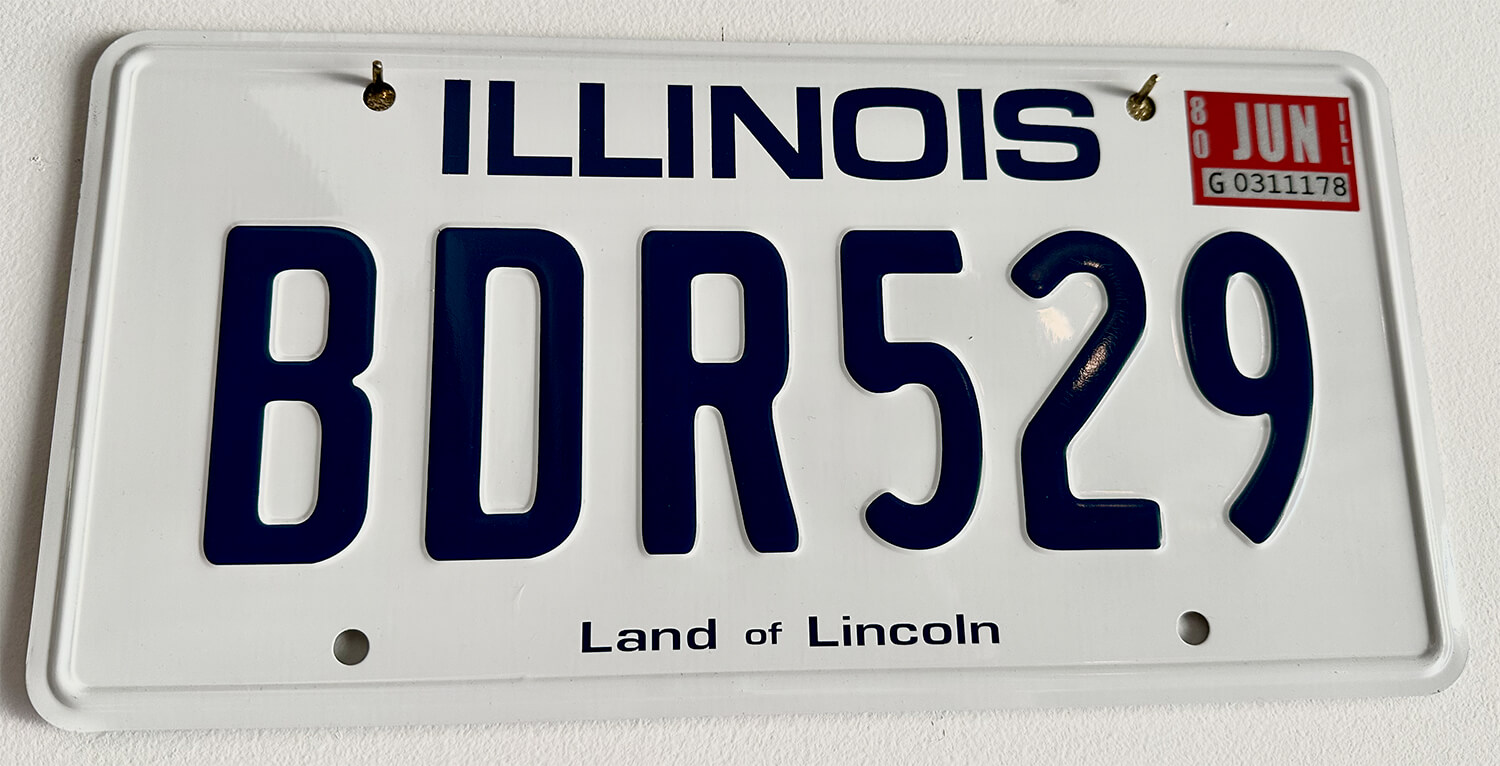“It’s got a cop motor, a 440-cubic-inch plant. It’s got cop tires, cop suspension, cop shocks. It’s a model made before catalytic converters, so it’ll run good on regular gas.” — Elwood Blues

A local historian once joked that the fourth star on the Chicago flag represents the 1979 filming of The Blues Brothers. Actually, the fourth star represents the Century of Progress Exposition of 1933-34, but that’s not to say the impact of making this epic — and ultra-expensive — 1980 musical comedy doesn’t still reverberate in the annals of the Windy City’s illustrious history. The Blues Brothers is a mayhem-laden cinematic odyssey about two blood brothers, Elwood Blues (Dan Aykroyd) and “Joliet” Jake Blues (John Belushi) — characters originated on Saturday Night Live in 1978 — and their sacred music-inspired mission to save their childhood orphanage. Despite the film’s star power, it’s Jake and Elwood’s 1974 Dodge Monaco — the Bluesmobile — that continues to fascinate generations of fans.
“Is It the New Bluesmobile, Or What?”
Introduced as a decommissioned Mount Prospect, Illinois, police car Elwood bought at auction, the 1974 Dodge Monaco was a popular choice for police cruisers throughout the 1970s. Beneath the hood, it packed a 440 cubic inch (7.2-liter) Magnum V8 with the full police package, pushing 220 horsepower and 350 pound-feet of torque. Performing physics-defying stunts throughout the film, moviegoers reveled in the car’s bad boy antics that ravaged the streets of Chicago and its surrounding suburbs, wrecked the Dixie Square Mall in Harvey, Illinois, hurdled the rising 95th Street Bridge, and drove literally through the lobby of Richard J. Daley Center.
Bringing the Bluesmobile to life onscreen for The Blues Brothers required 13 different 1974 Dodge Monaco models, all former California Highway Patrol vehicles identically transformed by the film crew to resemble a battered black and white version of a Mount Prospect police car.
Each matching Monaco had a specific purpose. Two were customized with underbody plating for hopping medians and other low obstacles. Five were camera-rigged solely for interior driving shots of Aykroyd and Belushi. Two were fine-tuned for high-speed stunt sequences. Three were modified with one-gallon gas tanks specifically for airborne stunts, including the Bluesmobile model that vaulted over a Chicago squad car at Lower Wacker Drive and Monroe Street, knocking out its Mars lights — as scripted — on the very first take. And one was modified to fall apart in front of the Cook County Building, a sight gag that took more than three months to coordinate. To keep up with the carnage, a 24-hour body shop was on standby to ensure damaged vehicles were quickly serviced for reuse.
“They’re Not Gonna Catch Us…”
Elaborate high-speed chase sequences throughout the film’s third act showing the Bluesmobile being pursued by dozens of early 1970s-era Chicago police and Illinois state police cruisers required specialized approvals beyond standard city and state filming permits. After numerous meetings with director/co-writer John Landis and the production’s stunt coordinators, Mayor Jane Byrne approved the filming of key scenes within Chicago limits, including shots of the Bluesmobile speeding through the bowels of the city along Lower Wacker Drive and barreling down Lake Street beneath the “L” tracks at speeds exceeding 120 miles per hour. The results were nothing short of spectacular, with Landis capturing some of the most heart-pounding driving stunts ever filmed.
Worried that moviegoers would believe the film was sped up, Landis asked stunt drivers Eddie Donno and Tommy Huff — doubling as Jake and Elwood throughout the production — to blast down Lake Street in the Bluesmobile again at over 100 miles per hour to film a cutaway pan shot from the vantage point of Arcade Place, this time with brave extras serving as walking pedestrians.
Filming of these city chase scenes were confined to weekends to minimize pedestrian danger around Chicago’s Loop, with upwards of 200 Chicago police officers and film crew blocking off every street, sidewalk, entrance, exit, and alleyway along a two-mile radius. With this much revved up lunacy and twisted metal in the hands of veteran stunt coordinators and the more than 100 stunt drivers recruited for the film, safety was the utmost priority. Upon its theatrical release on June 20, 1980, The Blues Brothers held the record for the most car crashes in a single film, aided by the jaw-dropping ten-squad car pileup staged at the intersection of West Lake Street and North LaSalle Street.
“Hit It!”
Almost a half-century later, The Blues Brothers remains a testament to not only cult classic moviemaking, but also American music traditions, with iconic blues, R&B, and soul performances captured throughout the film that embody its spirit of authenticity and passion. It’s also one heck of a lot of fun with its wild automotive stunts and over-the-top spectacle. And central to the film’s indelible pop culture legacy is the battered 1974 Dodge Monaco that became as much of a troublemaker as the black fedora and Ray-Ban Wayfarer-clad duo that literally drove it into the ground. With most of the 13 Monaco models destroyed throughout the making of the film or crushed after filming wrapped, only one exists today, displayed prominently at the Volo Auto Museum in the Lake County suburb of Volo, Illinois.
Did anyone ever fix the cigarette lighter?






